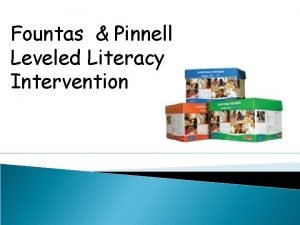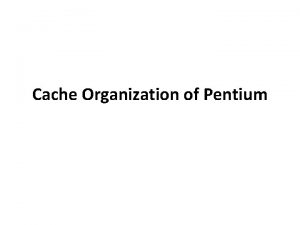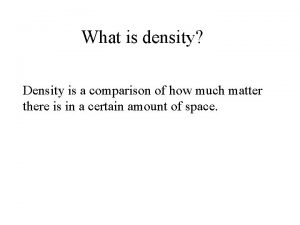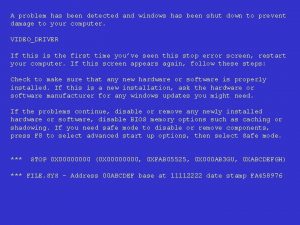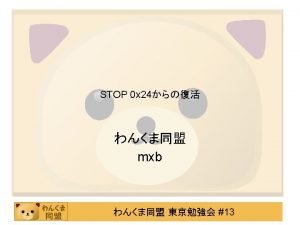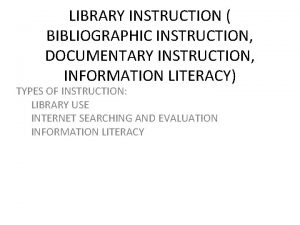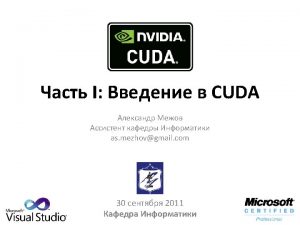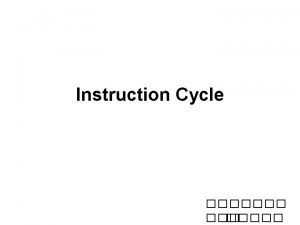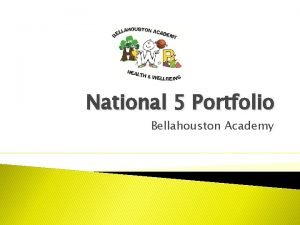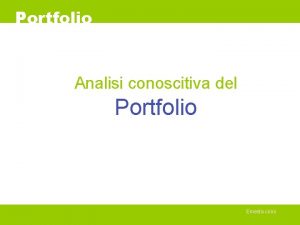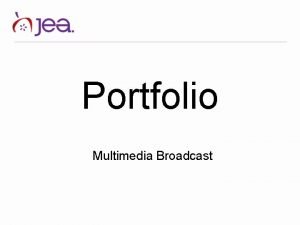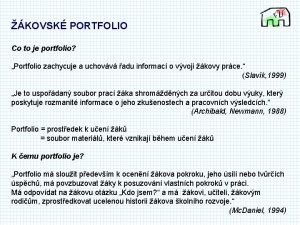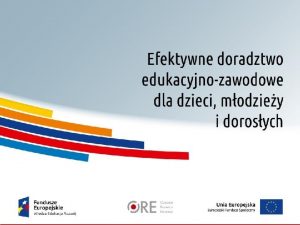Literacy Portfolio Teresa A James Literacy instruction has













- Slides: 13

Literacy Portfolio Teresa A. James

Literacy instruction has changed dramatically throughout each era. From conditional learning to strict rote learning, students and educators have been through many changes some good and some bad. With Common Core State Standards (CCSS), Next Generation Science Standards (NGS), and International Literacy Standards (ILA) driving instruction, the importance of solid best practices in literacy is more important than ever. We will explore ten topics of literacy; Theories, Foundational Knowledge, Diversity & Equality, Instruction & Balanced Literacy, Text Variety, Technology, Assessments, Learning Environments, Professional Development, and Policies. Literacy

Theories of Literacy-Historical Timeline Natural Learning Theory (1966 -1975) Arnold Gesell (1925) Maturationist § Cognitive VS Physical § Growth of nervous system contributes to brain and behavior development § Milestones (sequence of development) age of 6 ½ § Parent nor teacher can advance development § Whole language § Reading Readiness testing prominent until 1950’s Information Processing(1976 -1985) Engaged Learning (1996 -Present) Marie M. Clay (1963) Emergent John Dewey (1930) Burrhus Frederic Skinner (1936) • Learning is adaptable, • “emerge” into literacy—with writing, reading, and oral changing nontraditional language abilities developing together • Students motivated to engage • Learning is transformed in a series of changes from simple with literacy tasks to more complex • Improve their proficiency as • Early exposure to reading is critically important readers and writers • Oral language, phonological , print, and letter awareness • Instruction and practice then provide the coaching and Sociocultural Learning (1986 -1995) feedback necessary to gain Lev Vygotsky (1978) Social Constructivist competence Conditioned Learning Theory(1950 -1965) • Construct knowledge within a socially and cultural context Burrhus Frederic Skinner (1936) • Language is a key component • Behaviorist • Operant conditioning-causes of an action • Children acquire knowledge with the experienced peer (the zone of proximal development) and the consequences of that action • Children who come from homes and communities in which • Learning that is reinforced (repeated) adults model and discuss reading and writing increases tends to strengthen • Development does not affect learning their schemas • Whole-word vs. Phonics

Theories of Literacy- Foundational Knowledge CCSS. ELA-Literacy. . RF. 6. 1 CCSS. ELA-Literacy. RF. 1. 2 Teaching for Rigor Robert J. Marzano believes in a foundational skills. His model “A Call for a Critical Instructional Shift”, prioritizes what words students need to know on a subject. Students use writing prompts to acquire vocabulary. The theory is if you know how the words relate to each other, make a connection, and think about it in multiple ways, you would own the vocabulary. Brain Development The brain’s ability to understand language, remember words, or process what we hear are all natural abilities we are born with. Reading on the other hand is quite different. It relies on direct instruction where children learn that speech is comprised of individual sounds called phonemes and a recognition of written symbols of those sounds called the alphabetic principle. Road to the Code Benita Blachman Ph. D. , Eileen Ball Ph. D. , and Rochella Black, developed a method for helping young readers who have not mastered the basic skills for reading. Designed for Kindergarten-1 st grade and is also appropriate for students with phonological deficits. The program is geared for students who demonstrate poor left-to-right directionality limited letters, errors in letter sound production, and ineffective blending segmenting. A wonderful resource for English Language Learners. Stages Model of Reading Stage Model theorists Frith (1985), Ehri (1991), and Gough, Joel & Griffith (1992), believe that children’s reading is in stages of word identification and that students increase the number of strategies used during reading as their reading skills develop. Lower staged reading strategies remain available to a reader as they incorporate more difficult reading skills in later strategies. Stages of Word Identification: 1. Pre – Alphabetic Stage 2. Partial Alphabetic Stage 3. Full Alphabetic Stage 4. Consolidated Alphabetic Stage Family Literacy Theory Focuses on the study of relationships between families and the development of literacy. The quality and frequency of interactions surrounding literacy at the students’ home. Modeling reading habits and forming bonds within the school system, fosters a complete system for learning.

Diversity & Equality CCSS. ELA-Literacy. SL 6. 1 CCSS. ELA-Literacy. SL. 6. 6 CCSS. ELA-Literacy. L. 1. 1 Intervention When a student is having difficulty in the classroom and intervention strategy is implemented. The premise is to have the student engaged in class and provide the teacher with the tools needed to help the process. Teaching Tolerance is a free program offered by the Southern Poverty Law Center that has resources that help provide a fair and equitable learning opportunity for all students. Progress Monitoring When working with students it is important to monitor growth overtime. This adds in quality instruction and good practices. It is important as practitioners that we develop practices and cultures with regard to equality and diversity. Concentrations on learning and teaching pedagogies, environments, experiences and cultures, all work towards ensuring all students have an equal and fair chance to succeed in their learning journeys. The development of equality and diversity awareness, knowledge and skill within students and staff can lead to cultural and societal change. Diversity In Books is important for students to see themselves in all forms of literature. This helps to form community connections, guides in good practices, and have a positive experience reading for pleasure. Learning Disabilities Matrix provides a synopsis on learning disabilities characteristics, accommodations, and modifications needed to support equality in the classroom. Enhancing Instruction Bi-lingual and English Language Learners curriculum maintains the same rigor. Strategies are but in place for students success.

The student with the opportunity to identify topics, develop question, inquiry, collaborate, research, and sharing in the learning process, will be a global citizen that is career and college ready. Instruction and Balanced Literacy Quality instruction helps students find relevance by making connection and discover new skills overtime. Students become active participants in their own learning. Read Aloud & Shared Reading aloud builds numerous important foundational skills, introduces vocabulary, provides a model of fluent, expressive reading, and helps children recognize what reading for pleasure is. Co-Teaching Differentiation instruction within the classroom is key to enable students to gain deficit skills. Having a collaborative partner affords that individual or small group instruction. Writing is an important for communication and is a critical skill in becoming a good reader. Students should be writing every day according to Lucy Calkins of the Reading and Writing project. Phonics/Word Study Individual or small group working on sounds of letters in a structure method. Guided Reading Small-group reading instruction intended to provide differentiated teaching that supports students in developing reading proficiency. The small group allows children to be taught at the level that is intended to be more focused on their specific needs, accelerating their progress. Academic Literacy Instruction A journey through what is an academic literacy lesson from 3 different perspectives. CCSS. ELA-Literacy. W. 1. 1 CCSS. ELA-Literacy. W. 6. 3 CCSS. ELA-Literacy. RF 6. 3 Small Group Instruction (Guided reading, strategy lessons, and interventions)

CCSS. ELA-Literacy. RI. K. 10 CCSS. ELA-Literacy. RI. K. 9 CCSS. ELA-Literacy. R. I. 8 CCSS. ELA-Literacy. . Rf. K. 4 Text Variety Genres of Text • Children learn in a variety of ways • The increasing strategies that readers use to construct meaning, the more important it is to be exposure to different text. • Beneficial to read different genres simultaneously • Multi-cultural text increasing becoming mainstream Text Set Assignment • Different genes on the highlighting similarities and differences to help students make connection. Evaluating Text • Textbook evaluation • Will it help or hinder instruction Differentiation of Texts • Strategies for Aaron

Balanced Curriculum & Instruction Discipline Literacy Teaching content that is best suited for that area. No more one size fits all. Reading, writing, thinking, reasoning, and doing within each discipline. Students become aware of discipline-appropriate vocabulary that experts use in that field. Unit Revamp When developing balanced curriculum considerations for all students regardless of ability and language is essential. Example of Collegial Conversation/Workshop A balanced curriculum stimulates authentic learning and promotes the concept of community where everyone is learning together. There is a focus for all stakeholders to provide quality curriculum that not only includes state standards and test preparations, but also takes into consideration the student abilities to learn and grow throughout their education. The ultimate mission is to assist, challenge, and encourage every student to respond to text in meaningful ways, both for enjoyment and for gaining knowledge. CCSS. ELA-LITERACY. RL. 7. 1 CCSS. ELA-LITERACY. RF. 2. 3 CCSS. ELA-LITERACY. RST. 6 -8. 4 CCSS. ELA-LITERACY. WHST. 6 -8. 7 Backwards Design means that we take the outcomes we normally look for at the end of a given unit or school year and use them to guide curricular development from day one. The clearer we understand what and how students are expected to demonstrate proficiency, the better we can plan instruction (Jay Mc. Tighe and Grant Wiggins ). Project Based Learning engages students in complex real-world problem solving experiences. This type of active learning is academically rigorous and relevant to the students.

Assessments & Evaluations Formative and Summative Assessments Using a combination of assessments gives a clearer picture. This enables districts to revamp curriculum that fosters equity, rigor, and relevance for all students. Assessments are used to gather data in order to better understand the strengths and weakness of students. This enables the teacher to differentiate instruction, focus on a specific concept, find a starting point with a pre-assessment, and check for understand within a lesson. Baseline Intervention Plan A great tool for Response to Intervention (RTI), where you are able to provide instructional services with a multi-tired support based on pre and post assessments. Collaboration of Data Working with a team of teachers provides the opportunity to collaborate on best practices of instruction. When teachers work together with their colleagues to look at student learning data, use it to determine student learning needs, and then determine their own learning needs based on what students need, they design programs that really help improve instruction. Live Binder Reflection on Assessments This online catalog helps to keep assessments organized and easily assessable. Informal assessments are quick check-ins to determine meaning and understanding enabling the teacher to pinpoint which students are struggling. A great intervention strategy.

Learning Environment By creating a literate classroom environment rich in language and print, it stimulates authentic learning and gives a sense of community where everyone is learning together. Library ü Supports independent reading ü Varying levels ü Different media/genres ü Comfy setting/lighting ü Have students write reviews Listening, Speaking, Viewing ü Provide headphones ü Software based on curriculum ü Screencast-students can read, record and hear themselves ü Close caption for ELL/ENL Routines ü Important element in building a enriching learning environment. Display ü Word Wall ü Art ü Projects ü Very important to change often for motivation- students love to see their work Writing and Publishing ü Individual Folders ü Access to tablet/computer ü Writing tools to use ü Sentence/topic starters ü Display work Small Group ü Easel/poster paper ü Writing tools ü Manipulatives used for intervention ü Seating should be teacher centered

Professional Development Teaching is a constant evolving practice. New curriculum, standards, and strategies make it essential that staff have quality instruction to understand how to implement these practices. Literacy coaches and experts in the field need to take into account adult learners who are much more likely to tune out if it’s not relevant to their teaching. They prefer to have something tangible to take away and research later. Teachers have so much to do and having someone else to weed through the insurmountable researched information and apply it to best practices is priceless. Coaching Statement Reflections Collegial Circle Inquiry Collaboration Coaching Why does professional development matter?

Policies Literacy Coach Leadership Standards STANDARD 1: SKILLFUL COLLABORATORS Content area literacy coaches are skilled collaborators who function Rochester City School District effectively in middle school and/or high school settings. STANDARD 2: SKILLFUL JOB-EMBEDDED COACHES Content GOALS FOR INSTRUCTIONAL PROGRAM area literacy coaches are skilled instructional coaches for secondary teachers in the core content areas of English The district instructional program will help each language arts, mathematics, science, and social studies. student to: STANDARD 3: SKILLFUL EVALUATORS OF LITERACY NEEDS 1. read with comprehension Content area literacy coaches are skilled evaluators of literacy 2. think critically and reason competently needs within various subject areas and are able to collaborate 3. communicate effectively through writing and with secondary school leadership teams and teachers to speaking interpret and use assessment data to inform instruction. 4. effectively listen and observe Content Area Standard 5. function creatively through cultural, literary STANDARD 4: SKILLFUL INSTRUCTIONAL STRATEGISTS and artistic activities Content area literacy coaches are accomplished middle and 6. develop skills for vocational success high school teachers who are skilled in developing and 7. use mathematical skills implementing instructional strategies to improve academic 8. act with poise, self-confidence, and good literacy in the specific content area. We expect several physical coordination. Furthermore, the instructional program will assist audiences will glean useful information from the standards, including • district administrators, school board members, and each student to: 1. appreciate and respect authority and the law curriculum supervisors as they develop job descriptions and identify criteria for hiring and assessing the success of within a democratic process coaches and the coaching program • school leaders, including 2. assume a fuller sense of responsibility for principals, department chairs, and other members of school himself/herself and others 3. achieve satisfaction in working to accomplish leadership teams as they articulate shared goals and work to provide – 5– Key Elements of Literacy Coaching coaches and worthy goals teachers with the time and resources necessary for effective 4. exhibit fair play and good sportsmanship; 5. participate in family life and worthwhile leisure implementation of literacy coaching • parent groups and National Science Teachers Association Disciplinary core ideas have the power to focus K– 12 science curriculum , instruction, and assessments on the most important aspects of science. To be considered core, the ideas should meet at least two of the following criteria and ideally all four: • Have broad importance across multiple sciences or engineering disciplines or be a key organizing concept of a single discipline; • Provide a key tool for understanding or investigating more complex ideas and solving problems; • Relate to the interests and life experiences of students or be connected to societal or personal concerns that require scientific or technological knowledge; • Be teachable and learnable over multiple grades at increasing levels of depth and sophistication. Disciplinary ideas are grouped in four domains: the physical sciences; the life sciences; the earth and space sciences; and engineering, technology and applications of science.

References Araujo, M. (2016, June 8). Behaviorism Learning Theory. Retrieved from https: //www. youtube. com/watch? v=a. Gpp-QRLtvg&feature=youtu. be C. T. A. (1999, ). Setup rules and Routines. Classroom Management. Retrieved from http: //www. nea. org/tools/15377. htm Florida Center for Reading Research. "What is Road to the Code? . " Road to the Code. (2003): Web. <http: //lizditz. typepad. com/files/road_code. pdf>. Gadsden, V. (2008). Family Literacy. Encyclopedia of Language and Education, , 573 -587. (2008, April 4). Gesell Eval. Retrieved from https: //www. youtube. com/watch? v=LNzno. Ar 9 SZo&feature=youtu. be Linnea, C. E. 8. Development of Sight Word Reading: Phases and Findings (pp. 1 -2). Retrieved from http: //www. pitt. edu/~perfetti/PDF/Ehri. pdf "Leading the Way. " Marzano Research. Marzano, Web. <https: //www. marzanoresearch. com/>. Mizell, H. (2010). Why PROFESSIONAL DEVELOPMENT Matters. Leaning Forward, , 1 -28. Retrieved , from https: //learningforward. org/docs/pdf/why_pd_matters_web. pdf P. L. S. (n. d. ). Reading Rockets. Classroom Arrangement. Retrieved from http: //www. readingrockets. org/article/classroom-arrangement (n. d. ). Guided Reading with Dr. Jan Richardson. Resources. Retrieved from http: //www. janrichardsonguidedreading. com/resources-1 Robbins, J. , & Bauerlein, M. (2013). The Common Core State Standards: Two Views. Academic Questions, 26(1). Squires, D. A. , & Arrington, A. (1999). A Balanced Curriculum. Standards and Assessments for High Performance, , 1 -9. Retrieved , from http: //www. balancedcurriculum. com/A_balanced_curriculum_in_child_by_child. pdf Association for Middle Level Education (1991, ). Teaching Tolerance. Retrieved from https: //www. tolerance. org/
 Differentiated instruction vs individualized instruction
Differentiated instruction vs individualized instruction Direct instruction vs indirect instruction
Direct instruction vs indirect instruction Digital portfolio vs printed portfolio
Digital portfolio vs printed portfolio Fountas and pinnell lli
Fountas and pinnell lli James clayton lawson
James clayton lawson Clay lawson and russell odom
Clay lawson and russell odom Information and media literacy similarities
Information and media literacy similarities Introduction to mil
Introduction to mil People as media examples
People as media examples Cyber literacy and digital literacy
Cyber literacy and digital literacy Cache organization of pentium processor
Cache organization of pentium processor Density of golden syrup g/cm3
Density of golden syrup g/cm3 A problem has been detected and windows has been shut down
A problem has been detected and windows has been shut down Windows has been shutdown to prevent damage
Windows has been shutdown to prevent damage



